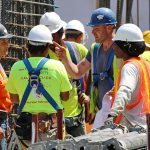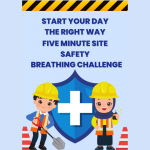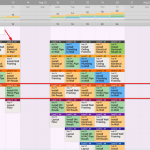(Guest Post by Mike Richer, Content Marketing Manager at Bridgit) The Health and Safety at Work Act of 1974 was meant to ensure that every contractor has the legal obligation to keep their workers safe from injury while working. There are countless measures taken in construction to train team members, provide personal protective equipment, plan for environmental conditions, and a slew of safety protocols and workplace assessments.
What about inclusion and diversity? Thanks to Deloitte, we already know that across all industries, companies that prioritize diversity and inclusivity:
- Are twice as likely to exceed financial goals
- Are six times better at anticipating and responding to change
- Generate 30% more revenue per employee
It’s great that creating a diverse and inclusive culture can have such a positive impact on your bottom line, but what about the impact to the health and safety of your team? At the end of the day it all comes down to experience and, more importantly, understanding that everyone experiences each day on the jobsite differently.
Think of it this way
There’s a new engineer joining the construction workforce, Maggie. According to the U.S. Bureau of Labor Statistics, Maggie represents part of the 1% of women that make up the construction workforce on the jobsite.
Maggie doesn’t feel represented at her company, because she isn’t. Most senior leadership teams in construction are men, and she’s also likely the only woman on any given project.
Maggie doesn’t feel comfortable in her PPE, because she’s swimming in it. Most, if not all, PPE is purchased to fit the average male – 6 feet tall and 180lbs.
Maggie doesn’t feel free from sexual harassment, because she isn’t. A recent ENR survey indicates that 66% of women in construction have faced sexual harassment or gender bias in the workplace.
Okay Maggie, now get to work!
One of the respondents to the above mentioned ENR survey gave a pretty damning example of her experience as a craft worker in construction:
“I was groped by my foreman and then told I could ruin a man’s career if I talked too much … I got laid off a day later. There have been times when I was genuinely scared for my safety and no one cared, and when I spoke up I was penalized.”
Let that sink in. Physical harassment is appalling and should never be overlooked, but there’s a part of that quote that really stands out – “I was genuinely scared for my safety and no one cared”.
Imagine showing up to work every day and feeling like you aren’t represented within your company, none of your safety gear fits, there’s a more-than-likely chance you’ll be physically or mentally harassed throughout the day, and you’re still expected to execute your work to meet company standards.
The same can be said for racial discrimination and harassment. The Washington Post uncovered that 55 nooses have been found on 40 worksites across the U.S. and Canada in the last five years. The noose is a symbol. A symbol of hate and intolerance that is meant to send a clear message – “You are not welcome”
Remember Maslow’s hierarchy of needs? Even 70 years ago when the hierarchy was created, Maslow recognized that the need to belong is as important to us as eating and breathing. Not feeling like a part of the team or organization will most likely affect your team’s work, but the stress and anxiety caused by exclusionary working cultures will certainly affect how engaged your team members are, and that’s when accidents happen.
A Gallup survey revealed that only 30% of Americans are engaged in their work to begin with. That can be disastrous on a construction site when it comes to worker safety. According to the same survey, the companies that ranked in the top quartile for employee engagement saw a 48% decrease in safety incidents compared to the bottom quartile.
If you want to make the workplace safe for everyone, you have to keep everyone engaged in their work and your organizational goals. The best way to keep everyone engaged is ensuring everyone feels like they belong, are heard, have a clear path to progress, and are contributing to the bigger picture.
It isn’t easy though, construction is male-dominated and highly stigmatized. Shifting to an inclusive working environment will take time, energy, and acknowledging and fixing any conscious or unconscious bias that may exist within your organization.
Here are some steps you can take to get started:
Evaluate Your Current Culture
Inclusivity is a top-down initiative and it starts with evaluating your company culture. Is it welcoming and supportive of people with different backgrounds? Is your leadership team receptive to new perspectives? A shift in company culture is dependent on buy-in from the leadership team. If it isn’t a priority for you, it won’t be for your team either.
Celebrate Differences
Diversity leads to greater innovation, better decision-making, and higher returns, but an inclusive culture is what keeps people engaged with your company. Show your team that not only are differences welcome, but celebrated. For example, have company potlucks and encourage your team to bring food that represents and celebrates their culture or background.
Listen
Everyone wants to feel as though they are not only heard, but that their voice matters as well. Setting up regular surveys or town halls can help identify areas for improvement within your company culture. Making the effort to make team members feel understood will not go unrecognized and will help retain workers with different backgrounds.
Use Inclusive Language
Terms like ‘manpower’, ‘foreman’, and ‘man hours’ are all examples of common construction language that is exclusionary. Ensure the language used in the office and on the jobsite is appropriate for people of all backgrounds.
Find Mentorship Opportunities for Your Team
The advice and words of wisdom from someone that has shared experiences can be invaluable. They can offer insight into career progression and how to navigate any roadblocks or difficult situations. By creating a resource for underrepresented team members you’re showing that you care about their long-term career goals and overall well-being.
The workforce of tomorrow won’t settle for exclusionary work cultures, but it can’t be stressed enough that buy-in starts from the top. The leadership team are the influencers within your company and set long-term organizational goals. If they’ve embraced diversity and inclusivity, the rest of the organization will follow, making it a part of the fabric of the company and a much welcomed, genuine change.









